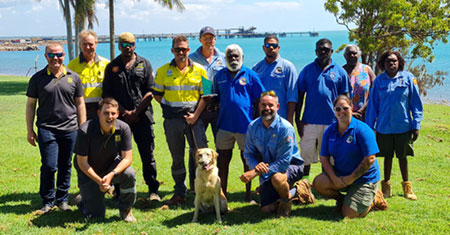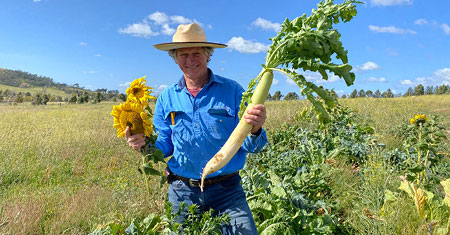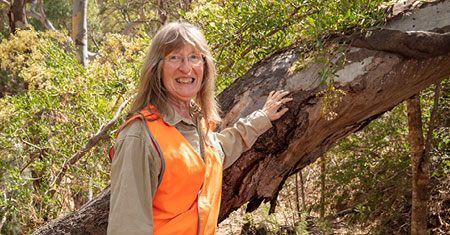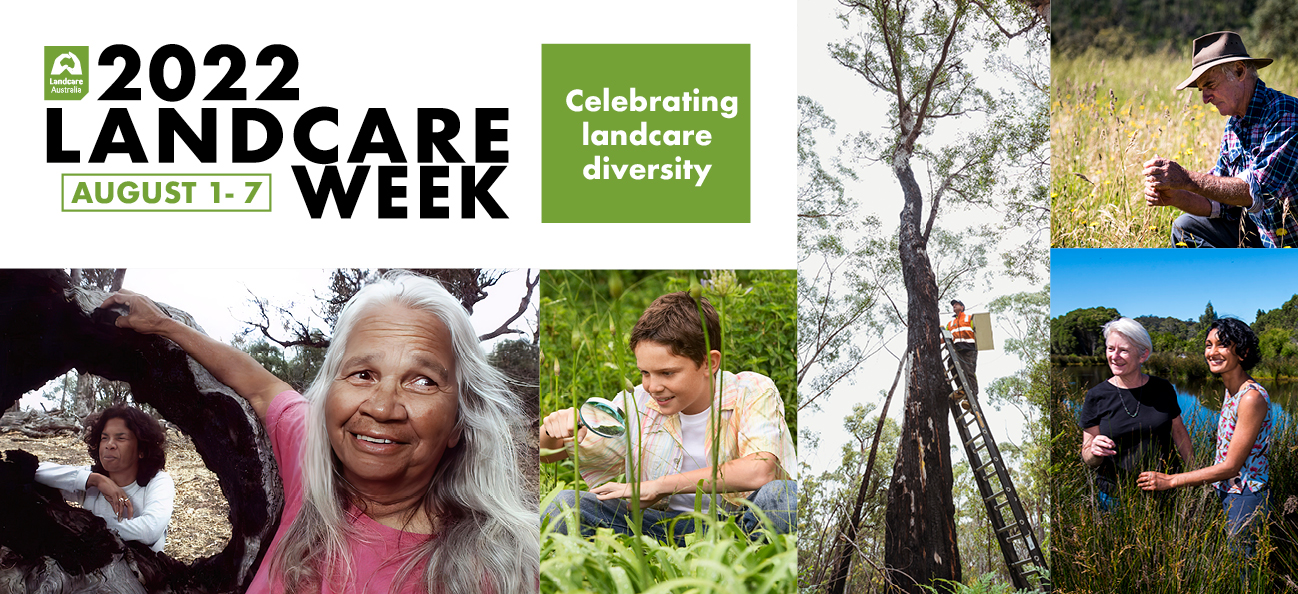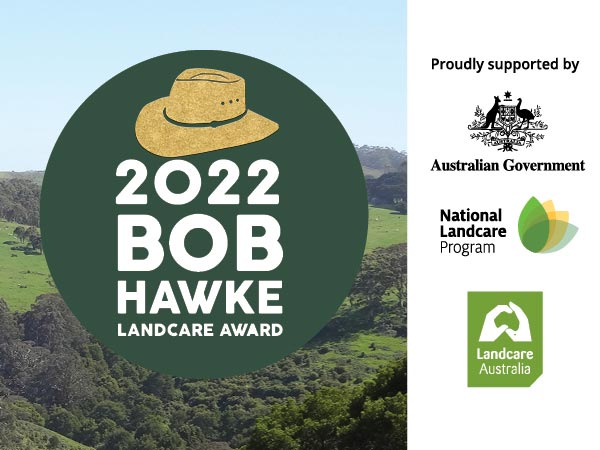
Australia’s top three landcare champions revealed
9 AUGUST 2022: Landcare Australia has announced the three finalists for the prestigious 2022 Bob Hawke Landcare Award today- all outstanding leaders and innovators in a diverse range of landcare projects.
Inspired by the former Australian Prime Minister, the Hon. Bob Hawke AC, the Bob Hawke Landcare Award is Landcare’s most coveted, national award. Now celebrating its 10th anniversary, the award recognises landcare leaders who have demonstrated a commitment to natural resource management and sustainable agriculture.
Minister for Agriculture, Fisheries and Forestry, Senator Murray Watt, said that he was impressed by the calibre of this years’ finalists and their groundbreaking accomplishments in landcare.
“The work of Dr Retallack, Mr Maynard and Mr Bassett could not be more important. These finalists are the landcare leaders and innovators that are paving the way for Australia’s sustainable farming future,” said Minister Watt.
“Their achievements show exactly why farmers, graziers and land managers across Australia need to be part of the conversation on how to address the climate crisis and improve sustainability. Their forward-thinking approach to agriculture is exactly what we need to build resilience and improve environmental outcomes.”
“Bob Hawke elevated landcare from a grass-roots community initiative to a national movement, and the Bob Hawke Landcare Award is important in highlighting the valuable work being done by the farmers who are taking environmental sustainability seriously and are eager to learn new ways to improve their farm practices.”
“I congratulate every one of these finalists for their incredible success.”
The winner of the 2022 Bob Hawke Landcare Award will be announced at the 2022 National Landcare Awards Gala Dinner on August 24, and awarded a prize package to the value of $50,000 for further development of their knowledge and skills in sustainable land management to enable an even stronger contribution to landcare.
Finalists for the 2022 Bob Hawke Landcare Award are:
Dr Mary Retallack (SA): Dr Mary Retallack has dedicated her life to the pursuit of environmental stewardship by sharing the practical skills needed to employ ecological restoration in vineyards throughout Australia. As an experienced agroecologist, scientist, and third-generation viticulturist, Dr Retallack has pioneered the use of native insectary plants in and around production systems and currently runs the National Landcare Smart Farms Small Grants funded EcoVineyards program, in collaboration with the Wine Grape Council of SA and more than 60 partnering organisations. Launched in SA, the highly successful program has recently received funding from Wine Australia to roll out a National EcoVineyards Program and is actively influencing the wine growing practices of more than 6,000 grape growers that collectively manage more than 146,000 hectares of wine grapes throughout Australia.
Bruce Maynard (NSW): Bruce Maynard is an agricultural innovator and inventor of the No Kill Cropping System, a unique, revolutionary technique that relies on the retention of full grassland functions resulting in the consumption of almost no external inputs. Mr Maynard’s extensive experience and passion for sustainable agriculture and landcare has led him to share his knowledge and skills with farmers and landcarers across Australia and form the Constructive Farming Cooperative, a group of farmers and researchers committed to extending the application of regenerative agricultural techniques. In addition, his strong commitment to animal welfare has also led him to develop the Stress Free Stockmanship competencies, and pioneer a new field of animal behavioural science called Self Herding alongside Dr Dean Revell.
Geoff Bassett (NSW): Geoff Bassett is a nationally recognised specialist in regenerative agriculture and soil health and the founder of Farm Mojo, where he supports broad acre farmers across Australia to transition from contemporary chemical usage to working with natural systems. A professional farmer for over 40 years, Mr Bassett champions enhancing on-farm soil fertility through mineral balancing, microbiology, carbon sequestration and promoting biodiversity to increase net profitability and ensure long term environmental resilience to climate change. Passionate about providing achievable solutions to complex problems and improving economic and environmental outcomes in rural communities, Mr Bassett has worked extensively with Landcare groups across Australia for the last 35 years and is a project leader and research collaborator with The Carbon Farm and Southern Cross University.


